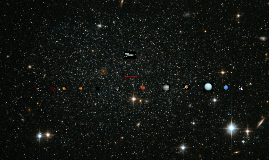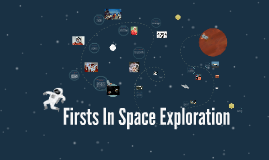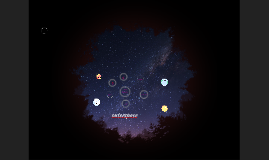Outerspace
Transcript: 1970 - First Space Rescue Alan Shepard made a 15 minute, 28 second flight on board the Freedom 7 on May 5, 1961. Three weeks later, President John F. Kennedy vowed to send men to the moon and back by the end of the '60s. 1969 - First Crew Exchange in Space 1973 - First American Space Station 1976 - First Mars Landing On October 4, 1957, the Soviet Union launched Sputnik, the world's first artificial satellite. This marked the beginning of the space race between the United States and the Soviet Union. 1972 - First Spacecraft to Leave the Solar System The unmanned space probe Viking 1 transmitted the first pictures from the surface of Mars on July 20, 1976. True to JFK's promise, Neil Armstrong became the first man to walk on the moon on July 20, 1969. He famously said, "That's one small step for man, one giant leap for mankind." Millions of people watched the historic event live on television. 1981 - First Reusable Space Vehicle 1961 - First Person to Spend Over a Day in Space The very first crew exchange in space took place in 1969, between the Soyuz 4 and Soyuz 5 spacecrafts. In 1970, after an oxygen tank exploded on board Apollo 13, Mission Control helped the crew return safely to Earth four days ater. 1962 - First American to Orbit the Earth Guion "Guy" Bluford Jr. became the first African American in space on board the space shuttle Challenger on August 30, 1983. Pioneer 10 was launched in 1972 and became the first spacecraft to leave our solar system on September 22, 1990. At that point, it reached a distance 50 times farther from the sun than Earth is. It is currently en route to the constellation Taurus. 1965 - First Space Walk The Soviets launched Valentina Tereshkova into space on June 16, 1963, on board Vostok 6. She spent three days alone in space. 1983 - The First African American in Space Firsts In Space Exploration 1961 - First Human in Space The space shuttle Columbia took off like a rocket and landed like an airplane in 1981, becoming the world's first reusable space vehicle. Sadly, the Columbia disintegrated in 2003, after a piece of foam broke off its external tank and struck the vehicle's left wing, killing everyone on board 1969 - First Man on the Moon Cosmonaut Alexei Leonov took the first space walk on March 18, 1965. He was tethered to the Voskhod 2 and was outside the craft for 10 minutes. 1957 - First Satellite to Orbit Earth The first animal from Earth to be launched into space was a female dog from Russia named Laika, who took flight in 1957. She lived for seven days inside Sputnik II, proving that living creatures could survive in space. Unfortnately, there was no way to bring Laika back to Earth, so she also became the first animal to die in space. Gherman Titov was the first person to hang out in space for longer than a day. Part of Vostok 2 in 1961, he was also the first person to sleep in space. 1957 - First Animal in Space John Glenn circled the Earth three times in 4 hours and 56 minutes on February 20, 1962. 1963 - First Woman in Space Yuri Gagarin became the first human in space on April 12, 1961. There were some problems upon reentry, and Gagarin ejected from the Vostok 1 and parachuted to Earth. Skylab launched on May 14, 1973 but was damaged during launch. The first of three rews arrived 11 days later for a 28-day stay. They made in-orbit repairs and set records for the longest amount of time spent in space (at the time). 1961 - First American in Space

















